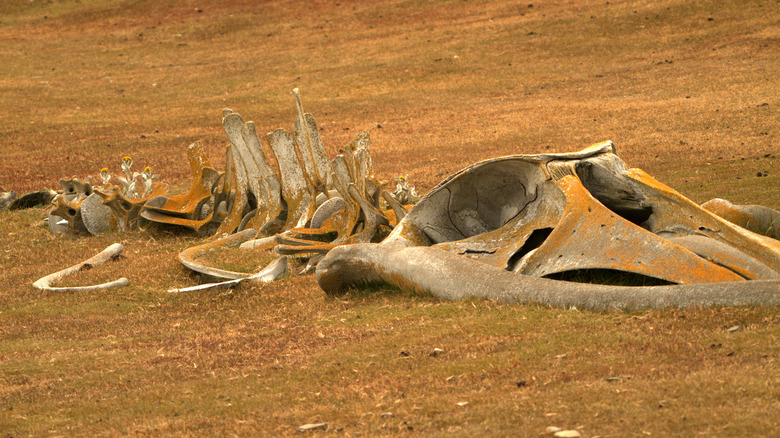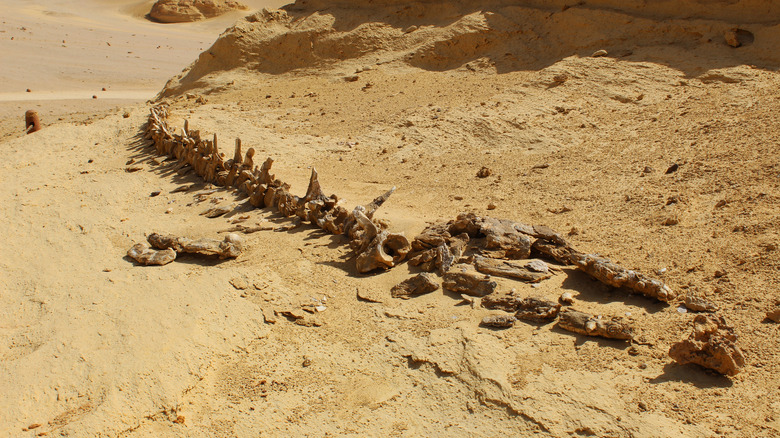The Creepy Truth About The Four-Legged Whale That Once Hunted The World
Prehistoric Earth was home to giant, strange, fascinating creatures that survived in the harsh developing environment and atmosphere of our planet. While we know a lot about dinosaurs and some of the predecessors to mammals and other animals that live today, new fossils are routinely discovered that shed light on our intriguing inhabitants of the planet's past. Like a whale that could walk.
According to BBC, Egyptian scientists discovered the fossil of an amphibious four-legged whale that stalked the seas and shores of Egypt around 43 million years ago. These beasts were around 10 feet long and weighed around 1,300 pounds, and had fearsome, strong jaws to catch their unfortunate prey. The animal, named amphibious Phiomicetus anubis since its skull resembles the jackal-headed Ancient Egyptian god, is a key discovery for paleontologists tracking the transition of whales from land-dwelling mammals to the giant sea-dwelling creatures of today.
This walking whale meant death to those near
The whale's powerful jaw and menacing size meant it was likely a top predator of the sea during its reign on Earth (via NPR). The original predecessors to whales were actually land creatures, herbivorous mammals compared to deer. At some point, they evolved into amphibious — and deadly — creatures before taking to the water full-time. Though it was discovered in the deserts of Egypt, this whale would have lived when it was a fertile ocean. The Fayum Depression, where the fossil was found, is rich with the skeletons of this ancient sea (via BBC).
The "Anubis" whale is not the first legged whale discovered, as a whale with four legs, webbed feet, and even hooves was found in Peru back in 2011. This creature would have lived around the same time as its African counterpart. However, amphibious Phiomicetus anubis is the earliest semi-aquatic whale to be discovered in Africa, giving paleontologists a clearer picture into the bizarre evolutionary journey of whales. Who knows was fascinating, and frankly terrifying, discoveries still wait to be unearthed from the Egyptian sands.

